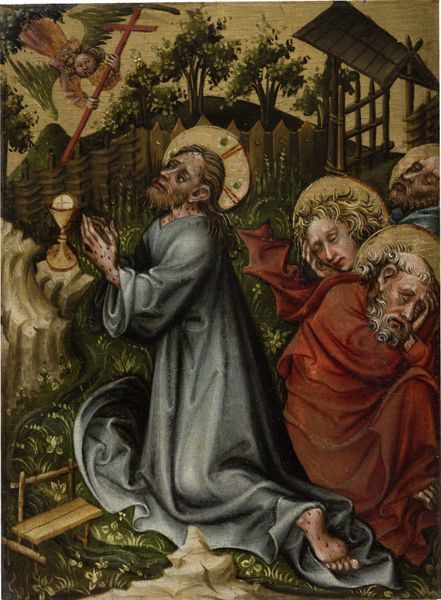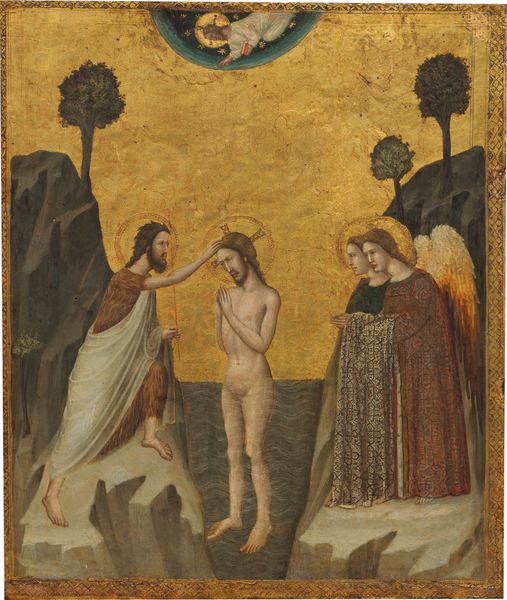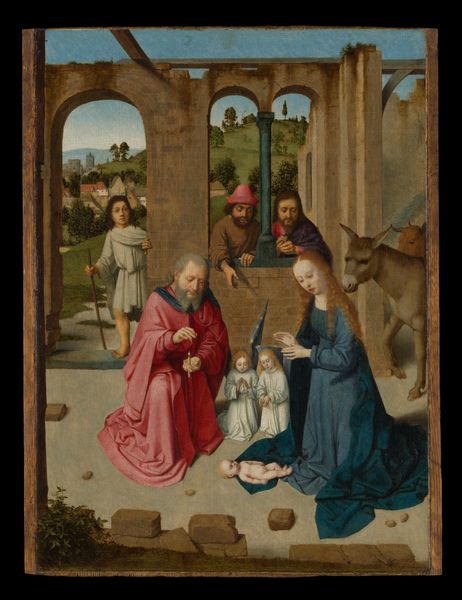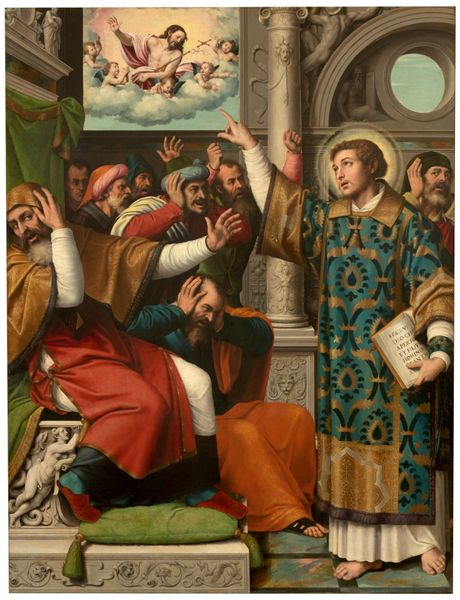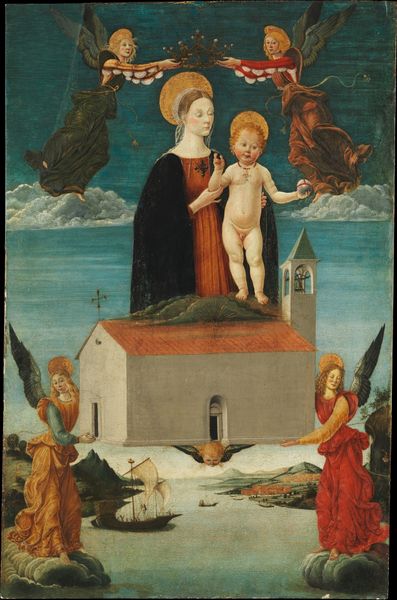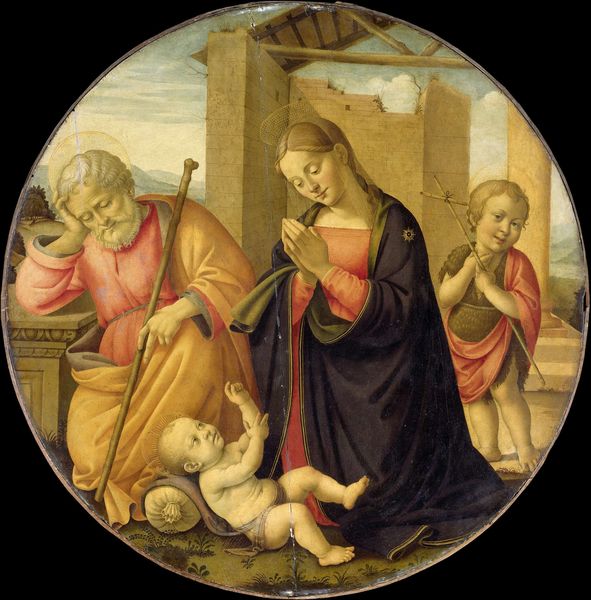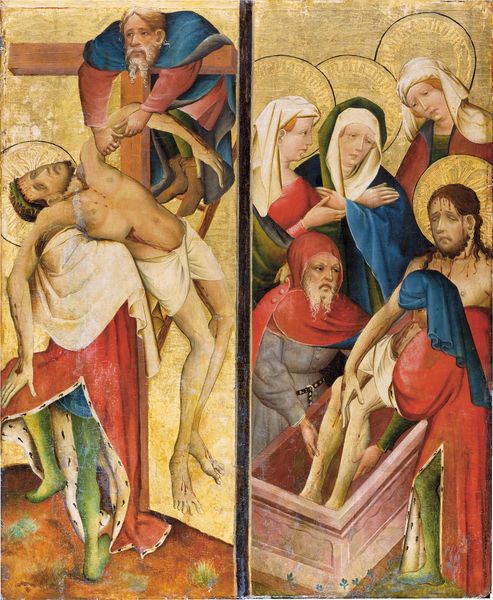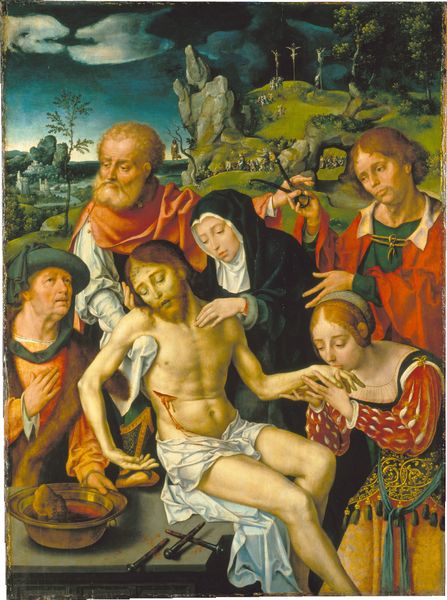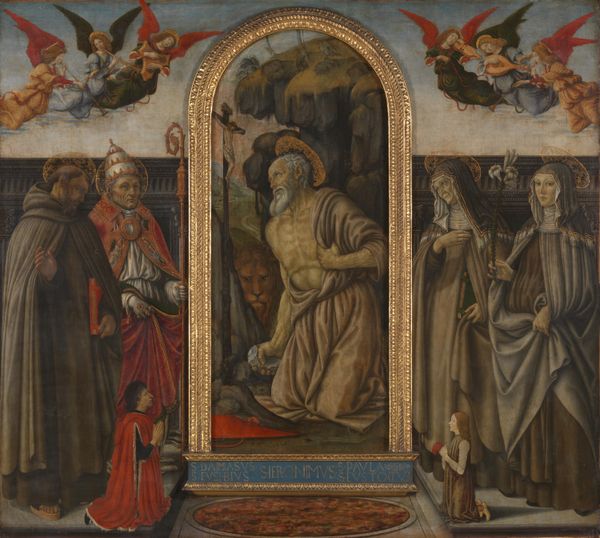
Saints Nicholas of Tolentino, Roch, Sebastian, and Bernardino of Siena, with Kneeling Donors 1481
0:00
0:00
tempera, painting
#
tempera
#
painting
#
landscape
#
figuration
#
oil painting
#
group-portraits
#
men
#
history-painting
#
italian-renaissance
Dimensions: Overall, with added strips, 31 x 24 3/8 in. (78.7 x 61.9 cm); painted surface 30 1/8 x 23 1/2 in. (76.5 x 59.7 cm)
Copyright: Public Domain
Editor: Here we have Benozzo Gozzoli's tempera on wood panel, "Saints Nicholas of Tolentino, Roch, Sebastian, and Bernardino of Siena, with Kneeling Donors," from 1481. It's striking how the holy figures stand so serenely while the donors are depicted much smaller and kneeling. What can you tell me about this piece? Curator: It's important to consider Gozzoli's materials and the process of making tempera. The meticulous layering and precise application, dictated by the medium itself, point towards a very deliberate production process. Also, observe the gold leaf. Its value as a commodity and its careful placement denote status and wealth, reflecting the patronage system. Editor: That's interesting! I hadn't considered the gold in that way, but now that you mention it, its almost shouting opulence. What does the artist want to communicate with this opulence? Curator: Think about who would commission such a work. The donors, kneeling before these saints, were likely from the rising merchant class. This piece displays wealth, certainly. But even more broadly it uses costly material and careful labor to literally *buy* proximity to the divine. What is the commodity being produced and consumed here? It's not just art, but spiritual influence, and a social standing. Editor: So, the materiality isn't just aesthetic; it’s integral to the social function. The gold is as much about earthly status as it is about heavenly glory? Curator: Exactly. The careful artistry also elevates the status of the artisan in a society stratified around craft, labor, and material ownership. The act of devotion and the cost of materials are intertwined. Editor: That makes me consider the entire workshop production. It's much more complex when one starts looking at the real material efforts and expenses. I never quite thought about a devotional painting in that context before. Thank you! Curator: And that's the crux of it, isn't it? Recognizing that artworks aren't just images; they are products of labor, material economies, and social negotiations.
Comments
No comments
Be the first to comment and join the conversation on the ultimate creative platform.

